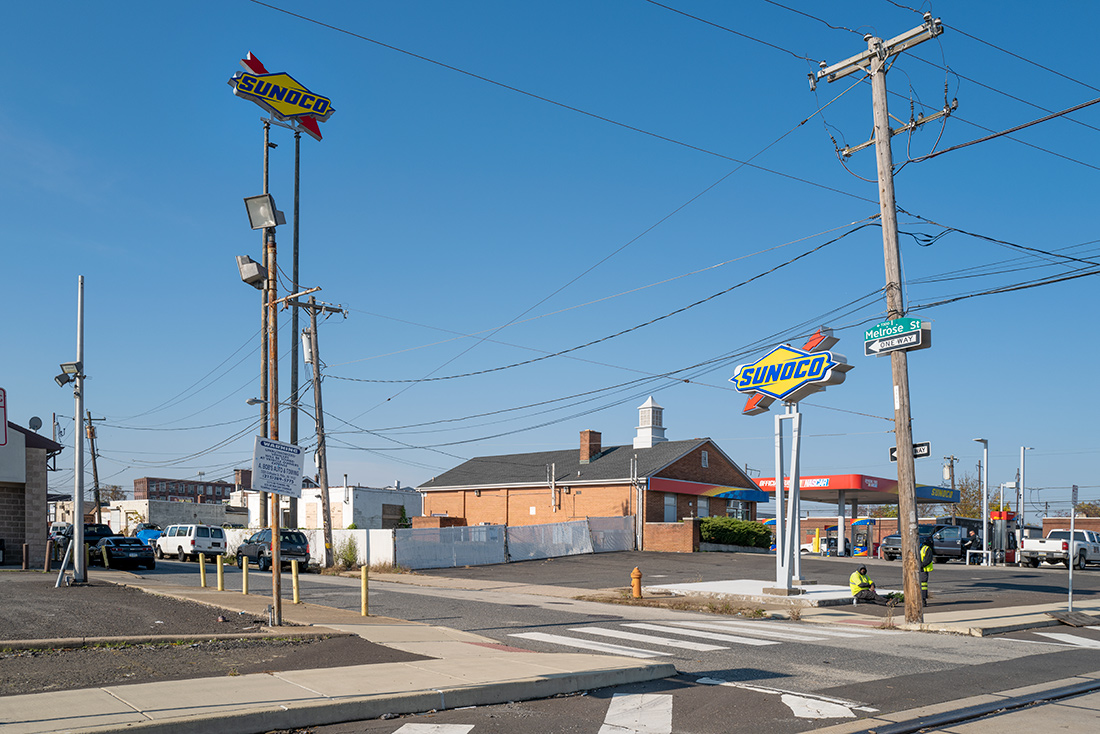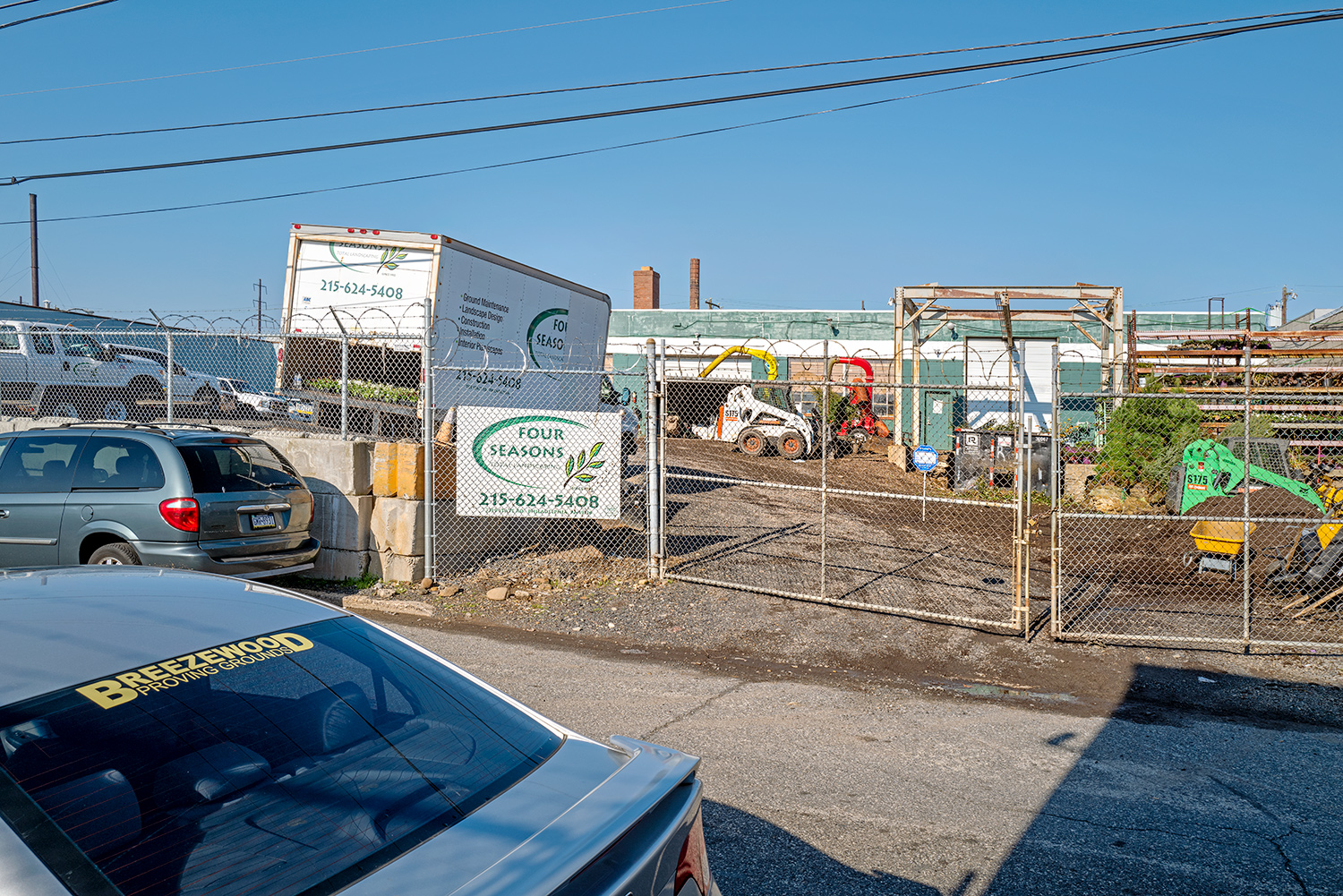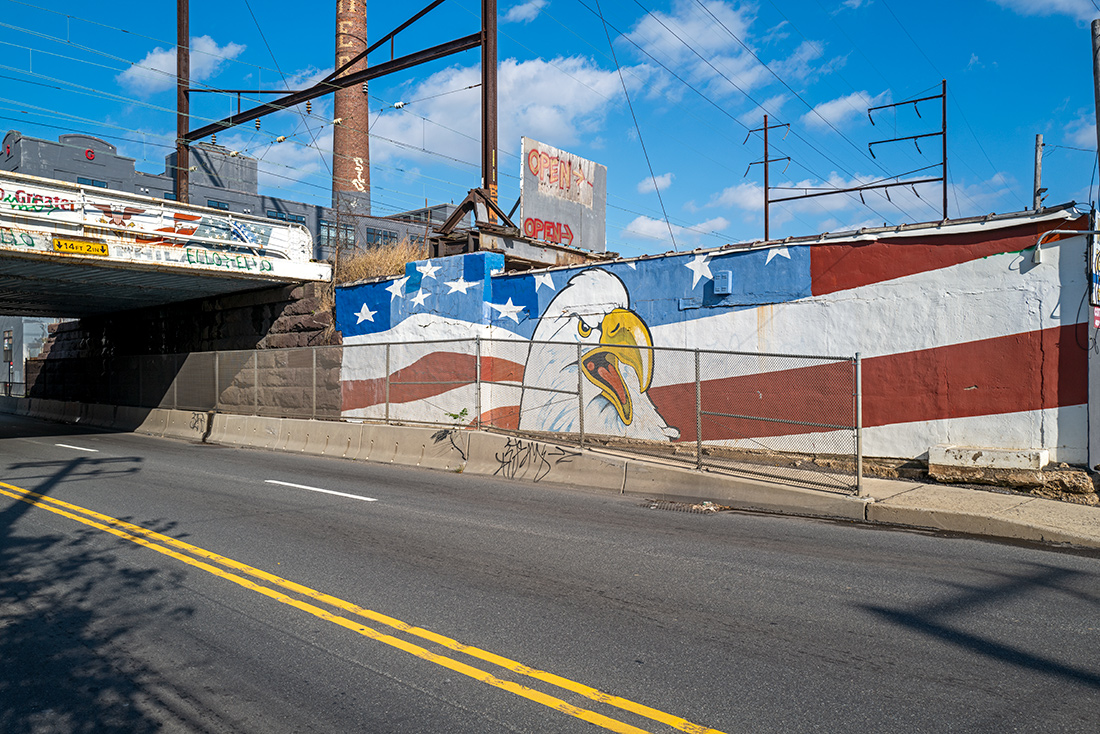After a horrendous early spring, the pandemic began easing in New York, but the overall mood remained tense, much as it had been during the past three years of the Trump presidency. On May 25th, in Minneapolis, George Floyd was murdered by police officers while under arrest. The killing set off a wave of protests across the country, and in NYC there were massive demonstrations, largely peaceful, throughout the city. At any given moment, multiple marches sprang up almost organically in one part of the city or another, often crossing the bridges between Manhattan and Brooklyn. I made the photograph above as several thousand marchers paraded up Wythe Avenue just down the block from my apartment in Williamsburg.
The pandemic lockdown was over, ready or not, though most people masked up and kept their distance. I followed events closely, not certain what I might do next photographically. I’m not a photojournalist, though I stay tuned to current events. I do not chase ambulances. I stay back and take in the whole horizon.
In July I became aware that protests in Richmond in my home state of Virginia were focused on the Confederate statues on Monument Avenue. I realized immediately that this was something I needed to photograph. On July 10th the statue of Jefferson Davis, former president of the Confederacy, was toppled by protesters. Two days later I left for Richmond.
The discussion about whether they should be maintained or removed had been going on for years, and suddenly the debate became moot as protesters took ownership of the statues, especially the immense monument to Robert E. Lee, covering their pedestals with graffiti, staging events, and various performances in the large grassy traffic circle around Lee.
While the focus was on the Robert E. Lee statue, all of the monuments were covered with graffiti. Skateboarders took advantage of the sloping base of the J.E.B. Stuart statue, and people walked up and down the boulevard, taking snapshots. Many of the houses along Monument Avenue had signs expressing support for Black Lives Matter. I noticed that I was not the only serious photographer documenting the scene. TV cameras were set up next to the Robert E. Lee statue as well.
Just off of Monument Avenue on Arthur Ashe Boulevard is a statue by the African American artist Kehinde Wiley. Wiley has been doing interesting work for years, but he became something close to a household name when he was commissioned by Barack Obama to do the official White House portrait. Many of his images, whether paintings or photographs, make use of historic, classical antecedents, often depicting contemporary Black men posing in a consciously stylized manner.
In Richmond, Wiley has created an equestrian statue modeled after the J.E.B. Stuart figure on Monument Avenue. In this piece, however, the swashbuckling general has been replaced by a contemporary Black youth astride a rearing horse, posed as if in the throes of battle. Seeing the two together, albeit at opposite ends of Monument Avenue, makes for a powerful juxtaposition.
As I worked on the Monument Avenue pictures I realized that this was a book I needed to make – quite different in concept from the Williamsburg book, which was more of an open-ended exploration of a landscape, but very much a part of the ongoing story of 2020. So, I ran another Kickstarter campaign, a little worried that following up so soon with a second campaign was not a good idea. But it went well, and I raised the money I needed to do Monument Avenue Richmond
Trump madness continued through the summer into the fall, and unsurprisingly, Trump refused to accept the decisive results of the November election. His campaign in 2016 began with a regal glide down the escalator of Trump Tower on Fifth Avenue but ended (at least symbolically) ignominiously in the work yard of a landscaping company in Northeast Philadelphia. While the 2020 votes were still being counted, the campaign announced on Twitter a press conference at the Four Seasons, which Trump assumed was the Four Seasons hotel in Center City Philadelphia. It was actually Four Seasons Total Landscaping. Why this location was chosen remains a mystery.
The media raced to the site, and Rudy Giuliani began his press conference, amid gardening equipment, only to be interrupted by the announcement that the networks had called the election for Joe Biden. Many of the reporters dashed off while others decided to visit the immediate area, which included a crematorium and a sex shop called Fantasy Island.
I knew immediately that I needed to go to Philadelphia and photograph the landscape surrounding Four Seasons Total Landscaping. So, I rented a car, dragged my 22-year-old son along as bodyguard, and drove down, about 2 hours away from New York. The day was beautiful, the environment stunningly rich. At least rich to me. Wedged between Interstate 95 and the Amtrak tracks, it’s an area full of chop shops, small factories, warehouses, a scattering of houses, and a superfund site. Tall billboards punctuated the sky adjacent to I-95, and a Sunoco logo with an insistent arrow pointing down as if intentionally saying this is the place.
I would love to do a book of these images – a one day wonder – that documents this strange urban landscape off the beaten track where, somehow, the Trump campaign ended up. But I’ve already done two self-published books this year. Maybe I’ll do a Blurb book for me.
A few days after my impromptu trip to Philadelphia, I headed down to Richmond, Virginia. Since I was last there, the statues of J.E.B. Stuart, Stonewall Jackson, and Fontaine Maury have been removed from their pedestals, and the Jefferson Davis monument has been stripped of its commemorative plagues and the figure of Vindicatrix, representing the vindication of the Lost Cause, perched high on the central column, brought down. Robert E. Lee remains standing in legal limbo, and as result, continues to act as a magnet for political activities. Those behind the lawsuit to keep Lee on his pedestal are, unintentionally, maintaining the centrality of the transformed Lee statue as a symbol of Black Lives Matter and resistance to white supremacy.
In the meantime, I am pleased to announce that I have signed a contract with Circa Press, the publisher of my book, Atlantic City, to bring out Monument Avenue Richmond next fall. The book will include the new photographs of the empty pedestals.
It has been quite a year.
















